Thelephora terrestris Ehrh. - Earthfan
Phylum: Basidiomycota - Class: Agaricomycetes - Order: Thelephorales - Family: Thelephoraceae
Distribution - Taxonomic History - Etymology - Identification - Culinary Notes - Reference Sources
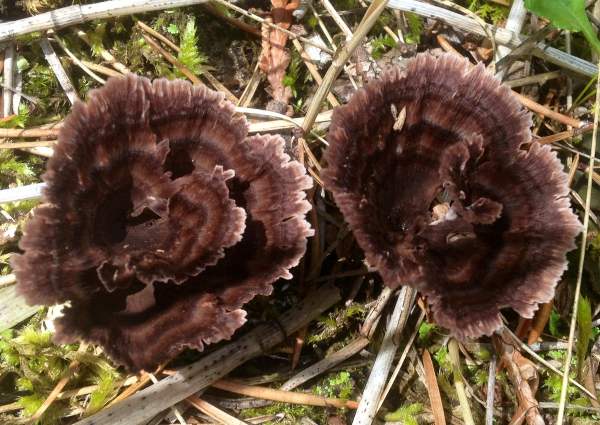
This strange fungus is well camouflaged on the floor of needle-strewn conifer plantations. It is nearly always found on dry sandy soil, where it forms mycorrhizae with pines and with spruce trees, but it also occurs in mossy coastal dune slacks, even where there are no obvious large plant associates.
Thelephora terrestris is most commonly foundwith conifers, but it has also been shown to form mycorrhizal associations with certain eucalypts.
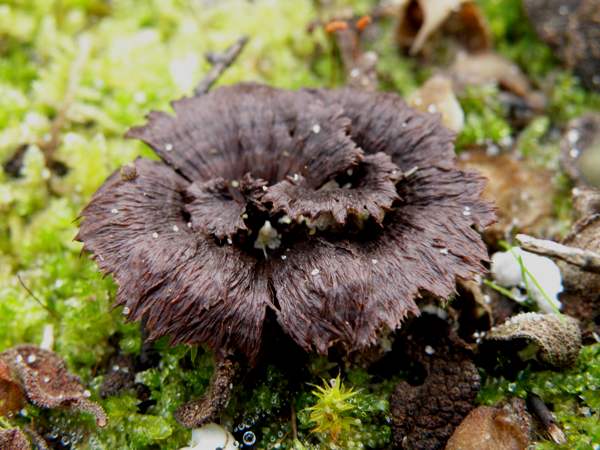
The saprophytic capacity of this fairly common fungus is evident from the fact that a resupinate (crust-forming) variety is sometimes found lightly attached to rotting conifer wood.
Distribution
Earth Fan is very common in areas of pine woods and other conifer plantations throughout Britain and Ireland; it is sometimes found with broadleaf trees such as oak, birch and even willow; and, just occasionally this versatile fungus is seen on heathland.
Thelephora terrestris occurs also in most parts of mainland Europe, and it is also commonly seen in coniferous woodland (especially pinewood plantations) in North America. The specimens on the left are shown by kind permission of Dustin Ware and Sarah Neumann, who took this photograph in Michigan USA.
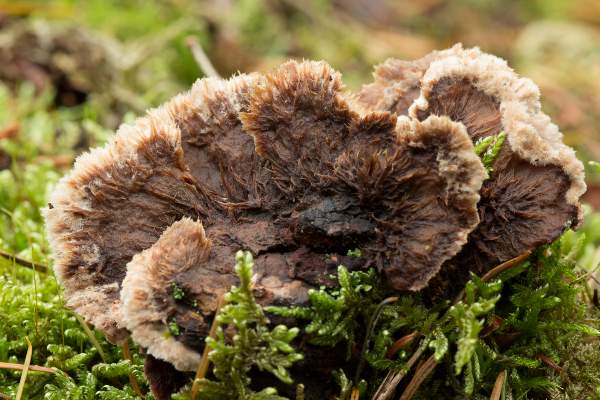
Taxonomic history
Earth Fan was described in 1786 by the German naturalist Jakob Friedrich Ehrhart (1742 - 1795), who named gave it the binomial scientific name Thelephora terrestris by which it is generally known today. (Ehrhart was the originator of the concept of botanical/mycological subspecies... so now you know who was to blame!)
Thelephora terrestris has several synonyms including Auricularia phylacteris Bull., Thelephora phylacteris (Bull.) Lam. & DC., Phylacteria terrestris (Ehrh.) Pat., Tomentella phylacteris (Bull.) Bourdot & Galzin, Hypochnus phylacteris (Bull.) Rea, and Thelephora phylacteris (Bull.) Corner.
There is also a resupinate form of the Earth Fan fungus which grows as a crust on dead wood; it has been given the scientific name Thelephora terrestris f. terrestris.
Thelephora terrestris is the type species of the genus Thelephora.
Etymology
The origin of the generic name Thelephora is the Greek word thele meaning nipple, and phorus meaning bearing or carrying. Can you see the nipple-bearing features in these fungi? Never mind! The specific epithet terrestris is straightforward and means, just as it sounds, of the earth (as in terrestrial).
Identification Guide
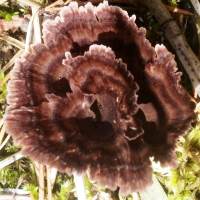 |
FruitbodyRosette-like fans; the upper surface reddish brown to dark chocolate brown, sometimes paler at margin and often with faint darker circular banding; no stem; petals splitting irregularly at the margin; covered in radial fibres; 6 to 15cm across, with individual petals 2 to 6cm long. The fertile underside is clay brown to mid brown or reddish brown; wrinkled but less fibrous than the upper surface. There is just a rudimentary brown stem, typically 1-2 cm in diameter. |
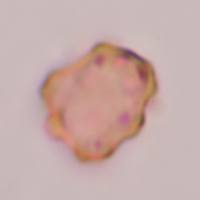 |
SporesAngularly ellipsoidal, 8-9 x 6-7µm; ornamented with irregular knobbly warts and bumps. Spore printPurplish-brown. |
Odour/taste |
Not distinctive. |
Habitat & Ecological role |
Mycorrhizal/saprobic; in dry sandy areas under pines and other conifers; less frequently with broadleaf trees and on heaths, and just occasionally with eucalyptus trees. This fungus is largely confined to areas of acidic soil. |
Season |
July to November in Britain and Ireland. |
Similar species |
The rather more common Thelephora penicillata is seen most often in damp coniferous forests. |
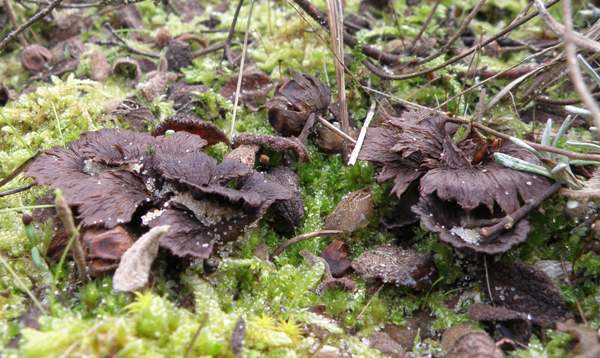
Culinary Notes
Earth Fan is a tough and insubstantial inedible fungus. It is therefore of no culinary interest and we do not have any recipe information for this species.
Reference Sources
Fascinated by Fungi, 2nd Edition, Pat O'Reilly 2016, reprinted by Coch-y-bonddu Books in 2022.
Dictionary of the Fungi; Paul M. Kirk, Paul F. Cannon, David W. Minter and J. A. Stalpers; CABI, 2008
Taxonomic history and synonym information on these pages is drawn from many sources but in particular from the British Mycological Society's GB Checklist of Fungi.
Acknowledgement
This page includes pictures kindly contributed by David Kelly.
Fascinated by Fungi. Back by popular demand, Pat O'Reilly's best-selling 450-page hardback book is available now. The latest second edition was republished with a sparkling new cover design in September 2022 by Coch-y-Bonddu Books. Full details and copies are available from the publisher's online bookshop...

